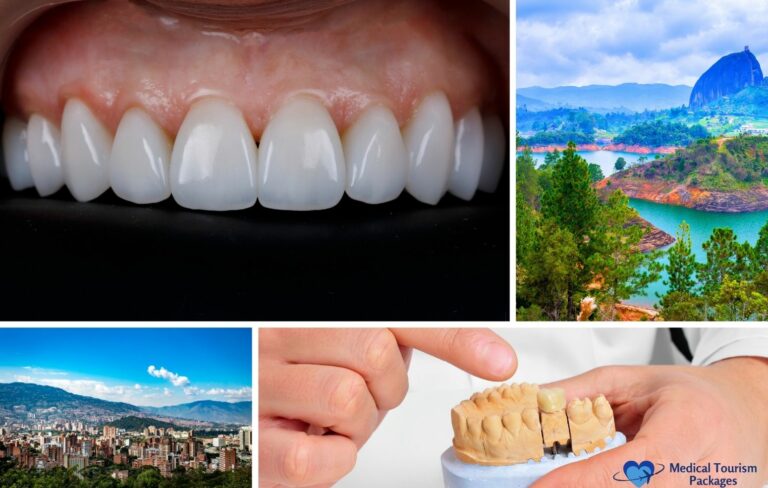Book Appointment Now
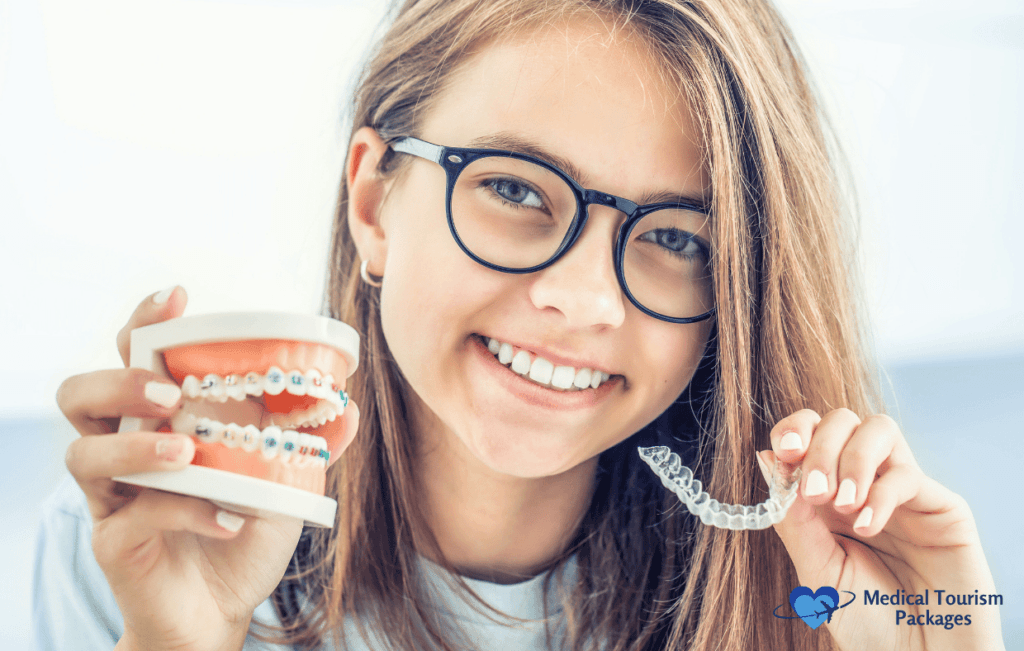
Smile Correction in Colombia: A Comprehensive Guide
Are you dreaming of a perfect smile but worried about the cost and complexity of orthodontic treatment? Look no further than Colombia, a country that’s become a hotspot for affordable, high-quality dental care, including cutting-edge orthodontic solutions. Whether you’re dealing with overbites, underbites, or just want a straighter smile, Colombia offers a range of treatments from braces to clear aligners, all at a fraction of the cost you might expect.
This comprehensive guide will walk you through everything you need to know about achieving the smile of your dreams in Colombia. From understanding the benefits of orthodontic treatment and what to expect during the process, to choosing the right orthodontist and preparing for treatment, we’ve got you covered. Dive in to discover how Colombia is revolutionizing smile corrections and why it could be the perfect destination for your dental needs.
What Is Orthodontic Smile Correction?
Orthodontic smile correction is a specialized dental procedure aimed at improving the alignment and appearance of teeth and jaws. It primarily addresses misalignments—such as overbites, underbites, crossbites, and gaps between teeth—that can impact both oral health and aesthetics. By utilizing devices like braces or clear aligners, this treatment method not only enhances the visual appeal of a smile but also contributes to better chewing function and oral hygiene.
In Colombia, renowned for its high-quality yet affordable dental services, orthodontic smile correction stands out as a sought-after solution for individuals aiming to boost their confidence and dental health without breaking the bank. This aligns with the growing trend of dental tourism, where Colombia’s combination of skilled orthodontists and cost-effective treatments provides a compelling option for patients worldwide.
What Are the Benefits of Orthodontic Treatment?
Orthodontic treatment extends far beyond achieving a straighter smile, offering significant improvements in both oral health and overall well-being. By aligning teeth properly, it reduces the risk of decay and gum disease, as well-aligned teeth are easier to clean and less likely to harbor harmful plaque. Additionally, correcting bite issues enhances chewing and speech, and prevents abnormal wear on tooth surfaces, protecting against future dental problems.
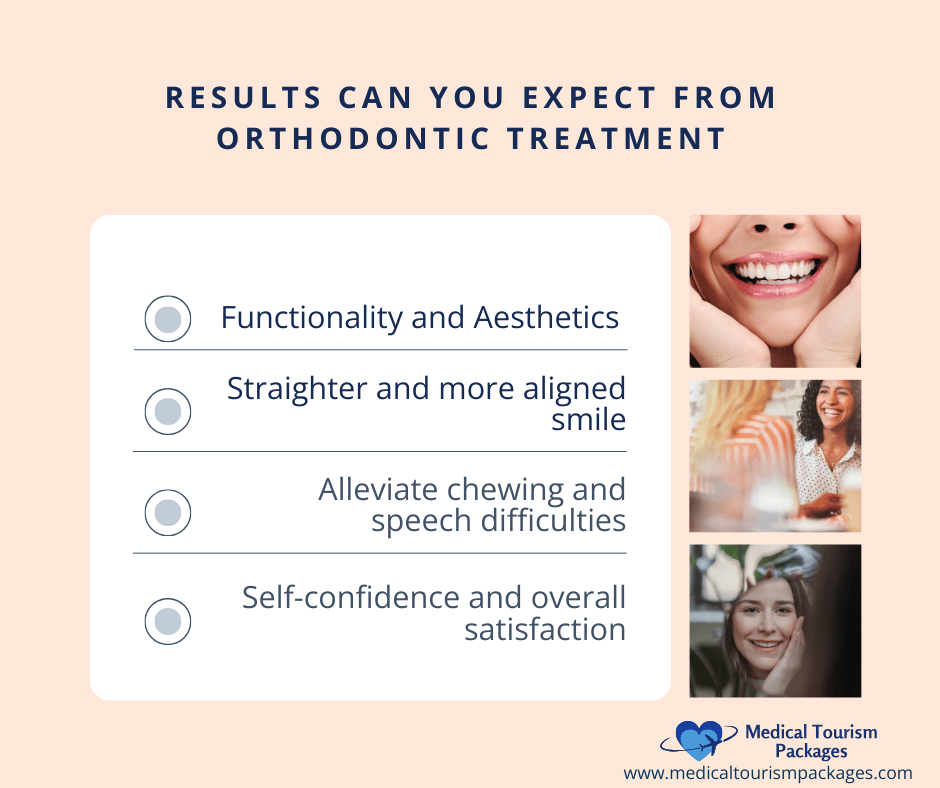
From a psychological standpoint, a corrected smile can greatly boost self-esteem and confidence, positively impacting social interactions and enhancing one’s quality of life. In the vibrant context of Colombia’s dental tourism, patients not only receive affordable, high-quality orthodontic care but also enjoy the unique opportunity to explore a rich culture and beautiful landscapes. This comprehensive approach to dental care ensures that patients seeking orthodontic treatment in Colombia benefit from both the functional and aesthetic aspects, making it an attractive option for those looking to improve their dental health and personal confidence.
How Does Orthodontic Treatment Enhance Your Smile and Oral Health?
Orthodontic treatment significantly enhances your smile and oral health by aligning your teeth and correcting your bite. This alignment facilitates more effective cleaning, substantially reducing the risk of plaque buildup, tooth decay, and gum disease. Properly positioned teeth also ensure even distribution of biting pressure, which can mitigate issues like jaw pain, TMJ disorders, and abnormal tooth wear.
The outcome is not just a visually appealing smile but also a healthier oral environment, contributing positively to your overall well-being.
What Are the Psychological and Emotional Benefits of a Corrected Smile?
A corrected smile brings profound psychological and emotional benefits. It often leads to increased self-confidence and enhanced self-esteem, empowering individuals to feel more at ease with their appearance. This newfound confidence can significantly improve social interactions, fostering new opportunities in both personal and professional spheres.
Moreover, the satisfaction derived from addressing oral health concerns promotes a greater sense of personal achievement and well-being. Thus, the emotional uplift from a corrected smile transcends mere aesthetics, positively influencing every facet of a person’s life.
How Do You Choose the Right Orthodontist in Colombia?
Choosing the right orthodontist in Colombia involves considering several key factors to ensure you receive high-quality and affordable dental care. Firstly, verify the orthodontist’s credentials and ensure they are certified by reputable dental associations. Experience in specific treatments you might need, such as braces or clear aligners, is crucial.
Secondly, look for patient reviews to gauge satisfaction and outcomes. Accessibility is also important; consider the clinic’s location and its convenience for you. Lastly, compare costs while keeping in mind that the cheapest option may not always provide the value or quality you seek.
By carefully evaluating these factors, you can make an informed decision, ensuring a successful orthodontic treatment experience in Colombia.
Why Are Certification and Experience Important for Orthodontists?
Certification and experience are paramount for orthodontists, serving as indicators of a practitioner’s ability to provide safe and effective treatment. Certification from recognized dental associations confirms an orthodontist’s dedication to maintaining high standards of care. Experience, especially in specific orthodontic treatments, reassures patients that the orthodontist has the expertise to manage a wide range of cases, including complex dental issues, thus improving patient outcomes.
What Is the Checklist for Evaluating an Orthodontist’s Qualifications?
To thoroughly evaluate an orthodontist’s qualifications, consider this checklist:
| Checklist Item | Description | Why It’s Important |
|---|---|---|
| Certification | Confirm the orthodontist’s certification with reputable dental associations. | Ensures the orthodontist meets professional standards of care. |
| Educational Background | Investigate their dental and orthodontic training institutions. | Verifies formal training and specialization in orthodontics. |
| Years of Experience | Assess the duration of their practice, focusing on areas pertinent to your needs. | Experienced orthodontists are likely to handle a wide range of cases effectively. |
| Specializations | Determine if they have expertise in specific treatments, like Invisalign or traditional braces. | Ensures the orthodontist is well-versed in the specific treatment you’re seeking. |
| Patient Reviews | Look for feedback from former patients to gauge their experiences and levels of satisfaction. | Provides insights into the orthodontist’s reliability, patient care, and treatment success. |
| Before and After Photos | Request examples of their work to evaluate the quality of their treatment outcomes. | Helps visualize potential results and assess the orthodontist’s skill level. |
| Continuing Education | Verify their engagement in continuous education to stay abreast of the latest orthodontic techniques and technologies. | Indicates the orthodontist’s commitment to staying current with advancements in orthodontic care. |
Employing this checklist allows for a comprehensive assessment of an orthodontist’s qualifications, ensuring they uphold the standards necessary for delivering top-notch orthodontic care.
How Is Orthodontic Treatment Performed in Colombia?
In Colombia, orthodontic treatment follows a comprehensive process that begins with an initial consultation. During this stage, orthodontists assess the patient’s dental structure through examinations and imaging techniques. Based on this thorough assessment, a customized treatment plan is crafted, utilizing a variety of orthodontic devices such as traditional braces, clear aligners, or other corrective appliances, tailored to the patient’s specific needs.
Advanced technologies such as digital smile design and 3D imaging are increasingly being adopted in Colombia, reflecting the country’s commitment to utilizing cutting-edge techniques in dental care. Cities like Bogotá, Medellín, and Cali are home to clinics that are at the forefront of these innovations, offering patients access to the latest in orthodontic treatment options. Throughout the treatment, patients benefit from ongoing monitoring and adjustments to ensure optimal progress is being made.
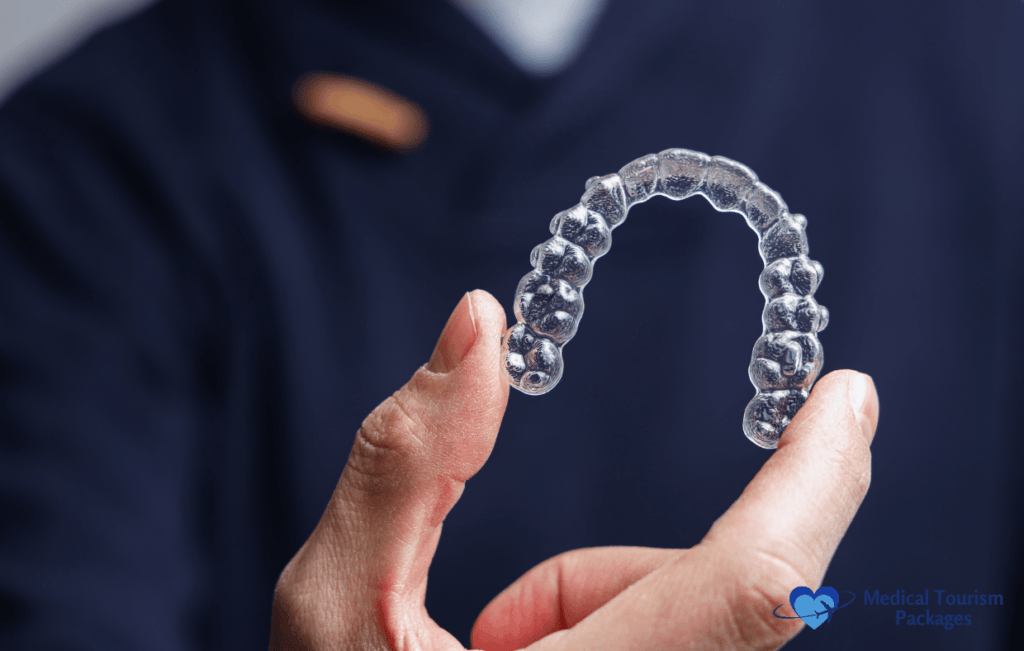
Colombia’s approach to orthodontic care is distinguished by its use of advanced technology and techniques, all facilitated by highly trained and experienced orthodontists. This not only ensures effective smile correction but also places a strong emphasis on patient comfort and convenience, making Colombia an attractive destination for those in search of quality orthodontic solutions.
What Are the Necessary Pre-Treatment Assessments and Examinations?
Prior to initiating orthodontic treatment, several crucial assessments and examinations are necessary. These include a comprehensive dental examination to evaluate the health of teeth and gums, and imaging tests such as panoramic X-rays or 3D cone beam computed tomography (CBCT) scans, which provide detailed insights into the jaw’s bone structure and the alignment of teeth. A bite analysis is also conducted to detect any issues with the way teeth meet.
These diagnostic tools are essential for creating an effective and personalized treatment plan, ensuring that each patient receives care that is tailored to their specific needs.
What Types of Orthodontic Treatments Are Available?
Orthodontic treatments in Colombia cater to a wide range of needs and preferences, including:
- Traditional metal braces, known for their efficacy in correcting complex dental misalignments.
- Ceramic braces, which offer a less visible alternative with tooth-colored brackets.
- Clear aligners, such as Invisalign, a discreet and removable choice for straightening teeth. Colombia has seen an increase in the availability of various brands of clear aligners, providing patients with multiple options.
- Specialized appliances and retainers may also be employed for targeted corrections and to preserve the treatment’s results. Innovative treatments unique to Colombia, such as lingual braces that are placed behind the teeth, are also available, highlighting the country’s diverse orthodontic market.
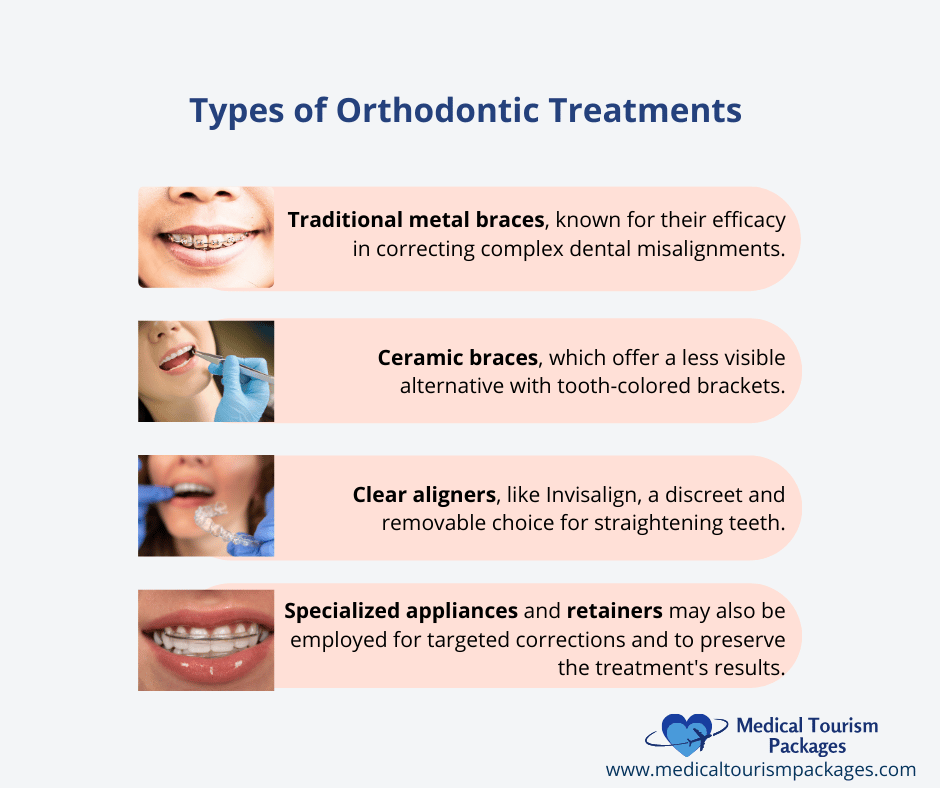
How Do You Prepare for Orthodontic Treatment?
Preparing for orthodontic treatment involves several key steps to ensure a smooth and successful journey. Initially, conduct thorough research to understand the various treatments available and identify what might be best for your specific needs. Selecting the right orthodontist is crucial; look for a practitioner with the necessary qualifications, ample experience, and positive feedback from past patients.
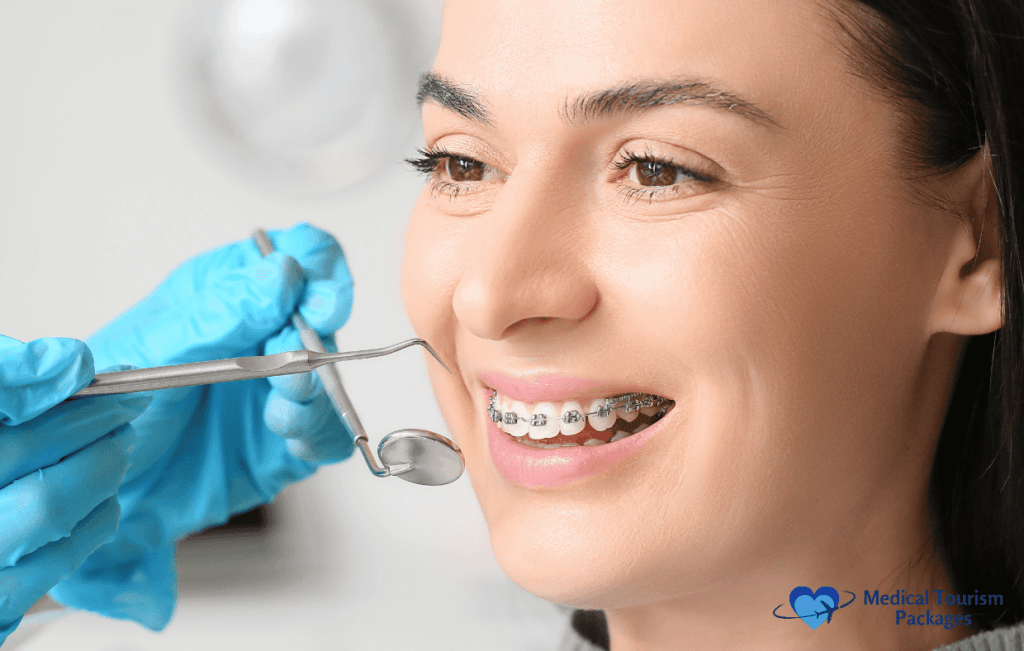
Before commencing your treatment, engage in a detailed discussion with your orthodontist about the proposed treatment plan, anticipated outcomes, and any potential discomfort or challenges that may arise. Optimizing your oral health is essential; resolve any existing dental issues such as cavities or gum problems prior to starting orthodontic treatment. Additionally, familiarize yourself with the care and maintenance required for your orthodontic appliance, be it braces, clear aligners, or another device.
Preparing both mentally and physically for changes to your daily routine, including dietary adjustments and oral hygiene practices, will aid in managing the treatment more effectively and lead to better overall results.
What Dietary and Oral Hygiene Adjustments Are Necessary During Treatment?
During orthodontic treatment, dietary adjustments play a pivotal role in protecting your appliance and maintaining dental health. It’s essential to avoid hard, crunchy, and sticky foods that can damage braces or distort aligners. Focus on consuming soft foods and chop larger food items into manageable pieces.
Oral hygiene is paramount; ensure you brush your teeth after every meal with a soft-bristled toothbrush and fluoride toothpaste. Incorporate daily flossing using tools like floss threaders or water flossers to eliminate food particles and plaque from areas that are challenging to reach.
What Are the Instructions for Starting Orthodontic Treatment?
To commence orthodontic treatment effectively, it’s crucial to have a clear understanding of your treatment plan, achieved through a detailed discussion with your orthodontist. Prepare your oral health by addressing any pre-existing dental conditions, such as cavities or gum disease. Familiarize yourself with the care and maintenance requirements of your specific orthodontic appliance and gather essential supplies, including orthodontic wax, a soft-bristled toothbrush, and fluoride toothpaste.
Adhere to the schedule of regular check-ups as recommended by your orthodontist to ensure progress is closely monitored and adjustments are made as necessary. Finally, mentally prepare for the lifestyle changes accompanying orthodontic treatment, encompassing both dietary modifications and enhanced oral hygiene routines.
What Is the Process of Orthodontic Treatment?
The process of orthodontic treatment unfolds through a series of meticulously planned stages, starting with an initial consultation. Here, the orthodontist assesses the patient’s dental health and discusses viable treatment pathways. This stage is followed by detailed diagnostics, including X-rays and digital scans, crucial for crafting a precise treatment blueprint.
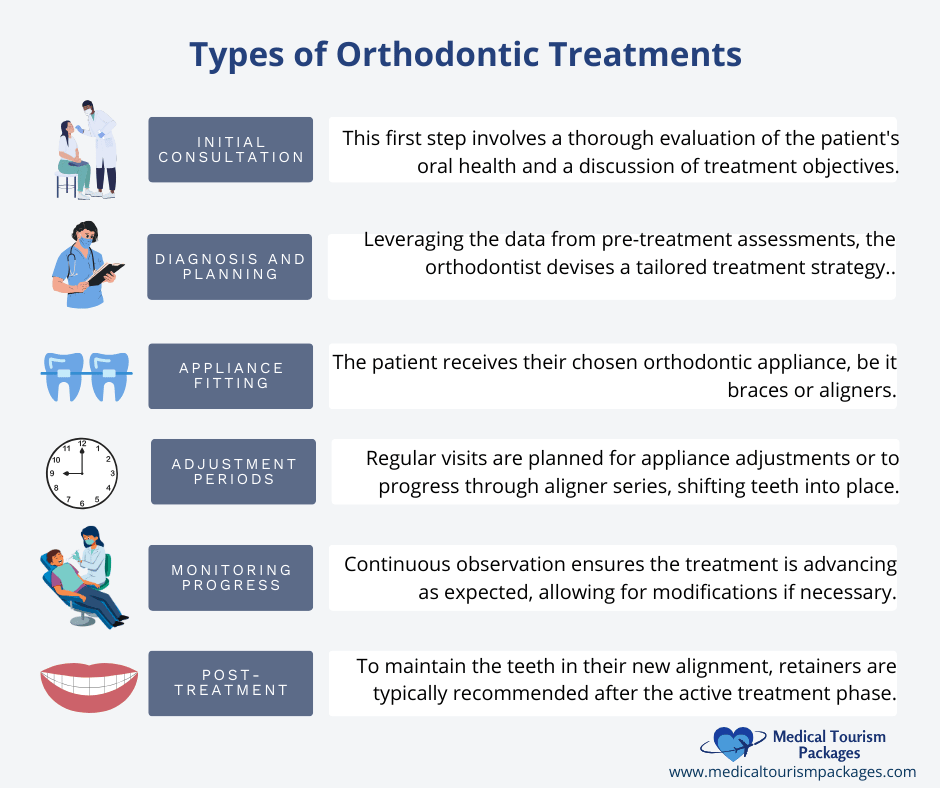
Customized appliances—ranging from traditional braces to clear aligners—are then tailored and fitted to gently guide the teeth into their correct positions over time. Regular follow-up visits enable the orthodontist to monitor the treatment’s progress and adjust the plan as needed. The concluding phase is retention, employing retainers to ensure the teeth maintain their new alignment.
Integral to this entire process is patient education on oral hygiene and dietary adjustments, essential for the treatment’s success and its long-term efficacy.
How Long Does Orthodontic Treatment Typically Take?
The duration of orthodontic treatment varies significantly, influenced by the complexity of the dental issues, the type of corrections needed, and the orthodontic devices used. On average, treatment spans from 6 months to 3 years, with many patients experiencing changes within the 12- to 24-month range. Adherence to the orthodontist’s guidance and consistent follow-up can positively impact the overall treatment timeline.
What Adjustments and Check-ups Are Required During Treatment?
Regular adjustments and check-ups are integral to the success of orthodontic treatment. For patients with braces, appointments are generally set every 4 to 6 weeks for tension adjustments and to make necessary modifications to the wires and bands. Those using clear aligners might have less frequent check-ups but will need to transition to a new set of aligners approximately every 1 to 2 weeks.
These visits allow the orthodontist to monitor progress and ensure the treatment plan is on track.
How Can You Manage Discomfort During Orthodontic Treatment?
Experiencing discomfort is a common aspect of orthodontic treatment, particularly following adjustments. To mitigate this, patients can use over-the-counter pain relievers, following their orthodontist’s recommendations. Consuming soft foods can reduce stress on the teeth and gums immediately after adjustments.
Applying orthodontic wax to braces can prevent irritation to the cheeks and lips. Additionally, maintaining excellent oral hygiene and using saltwater rinses can provide relief to sore gums.
What Are the Risks and Considerations for Orthodontic Treatment?
Orthodontic treatment, while highly effective for correcting dental and jaw alignment, entails certain risks and considerations. Tooth decay and gum disease are possible if oral hygiene is not rigorously maintained, as braces and other appliances can trap food particles and plaque. There’s a risk of root resorption, a condition where the tooth root shortens during treatment; though relatively rare, it is a potential concern.
Patients may also experience discomfort or minor pain due to the pressure applied to move teeth, which is generally manageable with over-the-counter pain relief. Furthermore, the duration of treatment might extend beyond initial estimates due to the complexity of dental issues or non-adherence to treatment protocols. Engaging in thorough discussions with an orthodontist about these risks and diligently following care and maintenance instructions are critical steps to mitigate potential complications.
What Are the Common Challenges of Orthodontic Procedures?
Orthodontic procedures present several common challenges, including maintaining optimal oral hygiene, as braces and aligners complicate the cleaning process, increasing the risk of plaque buildup and gum disease. Patients frequently encounter discomfort or pain following adjustments, necessitating effective pain management strategies. Dietary restrictions are also imposed to prevent damage to orthodontic appliances, limiting the intake of hard, sticky, or chewy foods.
Moreover, the duration of treatment may exceed initial estimates due to the complexity of dental issues or the individual’s response to treatment.
Which Factors Affect the Success of Orthodontic Treatment?
Several key factors influence the success of orthodontic treatment, notably the patient’s age and overall health, with younger patients often experiencing quicker responses due to their developing bone structures. Patient compliance with wearing appliances as prescribed and adhering to follow-up appointments is critical. The expertise and experience of the orthodontist are fundamental in creating effective treatment plans and managing any arising challenges.
Finally, the complexity of the dental condition being treated can significantly impact the duration and outcome of the treatment, with more intricate misalignments requiring extended treatment periods.
What Results Can You Expect from Orthodontic Treatment?
From orthodontic treatment, you can anticipate significant improvements in both the functionality and aesthetics of your teeth. The primary benefit is a straighter, more aligned smile, enhancing not just your appearance but also your oral health. Properly aligned teeth are easier to clean, leading to a decreased risk of plaque buildup, tooth decay, and gum disease.
Additionally, correcting bite issues can alleviate chewing and speech difficulties, as well as reduce the risk of jaw pain and excessive wear on teeth. Beyond the physical enhancements, many patients experience a remarkable boost in self-confidence and overall satisfaction with their smile. These comprehensive results contribute to an improved quality of life, underscoring orthodontic treatment as a valuable investment in your oral health and personal well-being.
How Will Orthodontic Treatment Improve Your Smile and Oral Function?
Orthodontic treatment offers significant enhancements to both your smile and oral function by aligning your teeth and correcting bite issues. This leads to a more symmetrical and visually appealing smile. Beyond aesthetics, these corrections facilitate improved chewing and speech capabilities, contributing to better overall oral health.
Properly aligned teeth simplify cleaning, minimizing the risk of plaque buildup, cavities, and gum disease. The combined functional and aesthetic improvements from orthodontic treatment play a crucial role in fostering a healthier and more confident you.
What Are the Long-Term Benefits of Orthodontic Correction?
The long-term benefits of orthodontic correction reach far beyond just a straighter smile. Teeth that have been orthodontically treated are at a reduced risk for decay and periodontal disease, thanks to the ease of maintaining cleanliness. Addressing malocclusion, or misaligned teeth, helps prevent abnormal wear on tooth surfaces, lowers the risk of injury from protruding teeth, and can alleviate jaw pain associated with an improper bite.
Moreover, the psychological uplift from an enhanced appearance and boosted self-esteem has significant positive effects on social interactions and personal well-being. These enduring advantages highlight the lasting value of orthodontic treatment for sustained oral health and increased personal confidence.
How Much Does Orthodontic Treatment Cost in Colombia?
Orthodontic treatment in Colombia is not only affordable but also meets high-quality standards. Below is a comparison of the cost ranges for various orthodontic treatments in Colombia versus average costs in the United States, Canada, and Europe:
| Treatment Type | Cost Range in Colombia (USD) | Average Cost in the US (USD) | Average Cost in Canada (USD) | Average Cost in Europe (USD) |
|---|---|---|---|---|
| Traditional Metal Braces | $1,500 – $3,000 | $3,500 – $8,000 | $4,500 – $9,000 | $4,000 – $9,000 |
| Ceramic Braces | $2,500 – $4,000 | $4,500 – $9,000 | $5,000 – $9,500 | $4,500 – $9,500 |
| Clear Aligners (e.g., Invisalign) | $3,000 – $6,000 | $4,500 – $8,400 | $5,000 – $9,000 | $4,000 – $9,000 |
| Lingual Braces | $3,500 – $7,000 | $8,500 – $11,000 | $9,500 – $13,000 | $9,000 – $13,500 |
This table illustrates the substantial savings patients can achieve by opting for orthodontic treatment in Colombia. For instance, the cost of traditional metal braces in Colombia can be as low as $1,000, compared to an average starting price of $3,000 in the United States.
What Factors Influence the Cost of Orthodontic Treatment?
Several factors influence the cost of orthodontic treatment in Colombia, each contributing to the final price. The type of orthodontic appliance is a key consideration. Traditional metal braces tend to be the most affordable option, while more advanced materials like ceramic braces or clear aligners, such as Invisalign, come with a higher price tag. As the materials and technology used become more sophisticated, the overall cost increases.
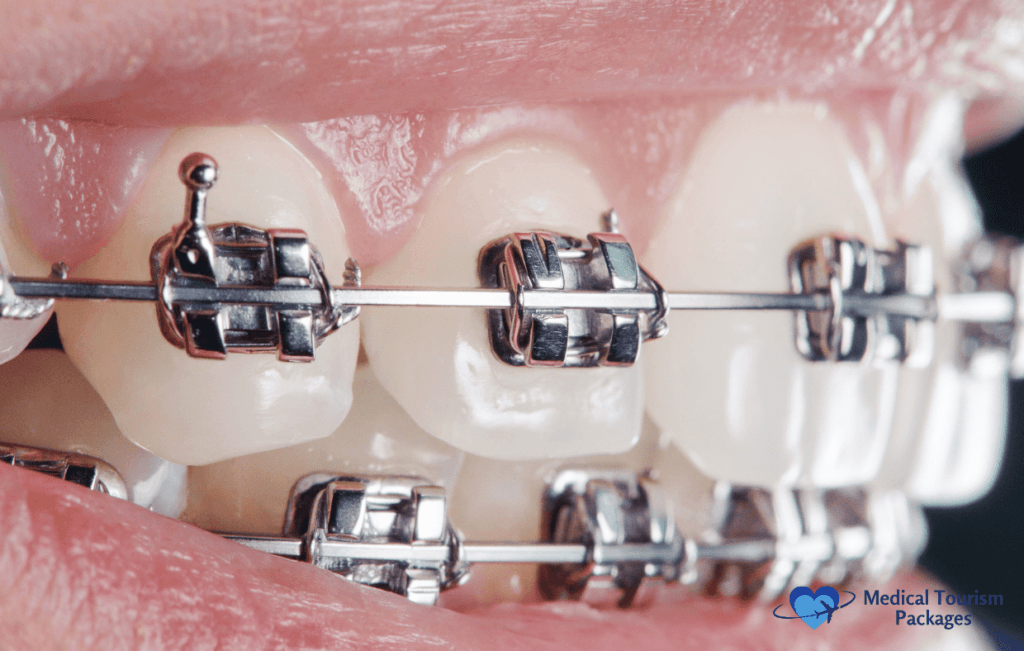
The complexity of a patient’s dental issues also plays a significant role. More complicated cases require longer treatment times, additional resources, and specialized techniques, all of which drive up the cost. On the other hand, simpler cases can be resolved more quickly and with fewer adjustments, making treatment more budget-friendly.
The duration of the treatment further affects the overall expense. Longer treatment periods mean more frequent follow-up visits and adjustments, resulting in a gradual increase in the total cost. Conversely, shorter treatments typically reduce expenses.
An orthodontist’s experience and expertise can have an impact as well. Highly experienced and reputable orthodontists often charge higher fees for their services, reflecting their advanced skills and the quality of care they provide. Patients may be willing to pay more for the reassurance of being treated by a seasoned professional.
Finally, the location of the clinic is an important factor. Clinics in major cities or affluent areas usually face higher operating costs, which are reflected in their pricing. Consequently, receiving orthodontic treatment in an urban center may be more expensive compared to services in smaller towns or less affluent regions. Understanding these factors helps patients make informed decisions about their orthodontic care and budget accordingly.
How Does the Cost of Orthodontic Treatment in Colombia Compare with Other Countries?
| Country | Cost Savings in Colombia |
|---|---|
| United States | 50% – 70% |
| Canada | 50% – 65% |
| Europe | 40% – 60% |
- Testimonials: Many international patients report high satisfaction with the quality and affordability of orthodontic treatments in Colombia.
- Case Studies: Success stories of complex treatments in Colombia often highlight the significant cost savings and excellent outcomes achieved.
This detailed breakdown provides a comprehensive overview of orthodontic treatment costs in Colombia, factors influencing these costs, and a comparison with other countries, showcasing Colombia’s position as a cost-effective destination for dental care.
Frequently Asked Questions About Orthodontics in Colombia
When considering orthodontics in Colombia, several frequently asked questions emerge, reflecting the common concerns and curiosities of potential patients.
What are the most common methods of smile correction in Colombia?
In Colombia, the prevalent methods for smile correction include traditional braces, clear aligners like Invisalign, and lingual braces. Each technique offers unique benefits tailored to individual needs and preferences.
How long does orthodontic treatment typically last in Colombia?
Orthodontic treatment duration in Colombia varies, generally ranging from 18 to 36 months. The specific timeframe depends on the complexity of the dental issues and the method of correction selected.
Are there any age restrictions for undergoing orthodontic treatment in Colombia?
No specific age restrictions exist for orthodontic treatment in Colombia. However, early evaluation is recommended, with treatments often starting from the age of 7 to address issues promptly.
Which Country Has the Best Orthodontic Treatment?
While countries like the United States and Germany are known for top-tier orthodontic care, Colombia is also emerging as a notable option due to its combination of high-quality treatment, modern technology, and affordable pricing. Many Colombian orthodontists are internationally trained and provide services comparable to those found in more traditionally recognized countries.
Is Colombia a Good Country for Dental Work?
Yes, Colombia is an excellent destination for dental work. It offers high-quality care with internationally trained professionals and state-of-the-art facilities. Dental treatments, including orthodontics, can cost up to 50-70% less than in the U.S. or Europe, attracting patients from around the world. The healthcare system in Colombia is well-regulated, ensuring high standards of care.
Where in the World Are Braces Cheapest?
Braces are among the cheapest in Colombia, thanks to the country’s lower operational costs and favorable exchange rates. Patients can access modern clinics, particularly in cities like Bogotá and Medellín, where prices for orthodontic treatments are significantly more affordable than in many Western countries.

